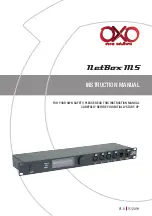
Operation Manual – ITW GSE 6400 Tier 4
6) Engine Cooling System
a) General
Cooling system service requires more than maintaining the proper coolant level in the radiator
and protecting the system against freezing. Water should be clean and free of any corrosive
chemicals such as chloride, sulfate, and acids. It should be kept slightly alkaline with a pH value
in the range of 8.0 to 9.5. Any water, which is suitable for drinking, can be used in the engine
when properly treated as described in engine maker’s operation manual. The engine maker’s
representative should be consulted regarding the selection of satisfactory brand, permanent-type
antifreeze for use in the cooling system.
b) Radiator
Cap
1) General
A pressure relief valve is built into the radiator cap. It is designed to open at a pressure of
approximately 15 psi (103.4 Kpa).
WARNING
When removing cap from a very hot radiator,
DO NOT
turn cap past safety stop until
the pressure or steam has escaped.
2) Removal
To remove, turn the cap to the left (counterclockwise) to the safety stop. When all pressure is
released, press down on the cap and continue to turn until the cap is free to be removed.
CAUTION
Allow engine to cool before adding coolant.
CAUTION
Do not attempt to repair the valve in a radiator cap in case of failure. Replace with a
new cap.
3) Installation
When installing the cap, be sure it is turned clockwise as far as it will go so that the pressure
retaining valve will be functional.
c) Coolant
The preparation and maintenance of the coolant solution is important to engine life and is
completely covered in the engine manufacturer’s operation manual. For information regarding
coolant specifications, testing equipment, antifreeze, etc., refer to engine maker’s operation
manual that accompanies the equipment’s manual or consult the local engine maker’s
representative.
OM2248 Rev B
Page 77 of 104
















































